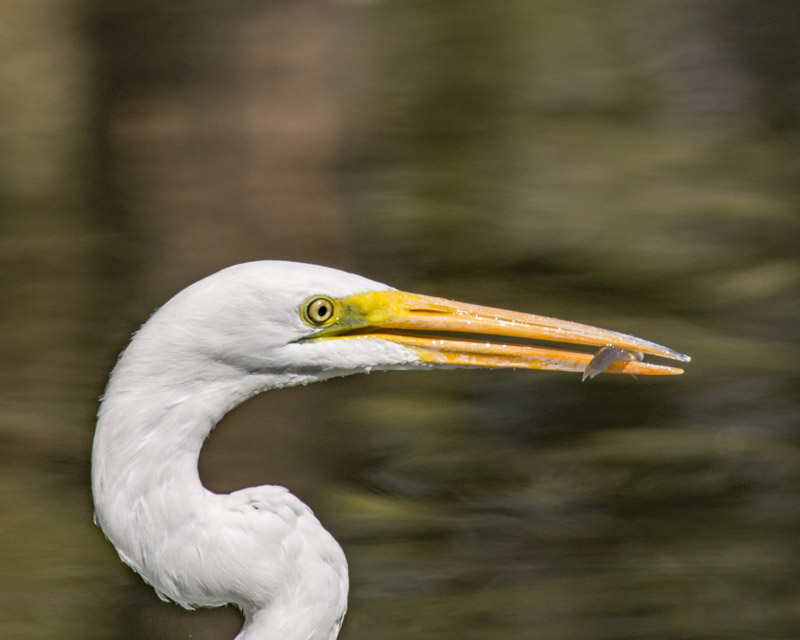By Dan Weisz
The Great Egret: “A tall, stately white wader of quiet waters. Common, especially in the south, it may wander far to the north in late summer. Nearly wiped out in the United States in the late 1800s, when its plumes were sought for use in fashion, the Great Egret made a comeback after early conservationists put a stop to the slaughter and protected its colonies; as a result, this bird became the symbol of the National Audubon Society.” (http://www.audubon.org/field-guide/bird/great-egret)
Great Egrets are tall wading birds associated with shallow water, but they do roost in trees. This one was seen in a eucalyptus tree at the west end of the pond in Fort Lowell Park.
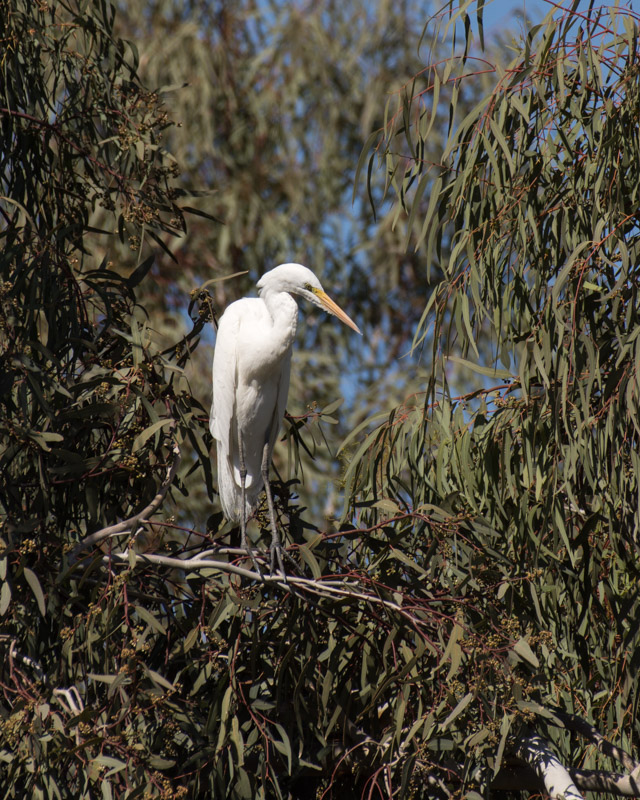
With an impressive wingspan, the egret flew back to shore, trailing its long black legs behind it.
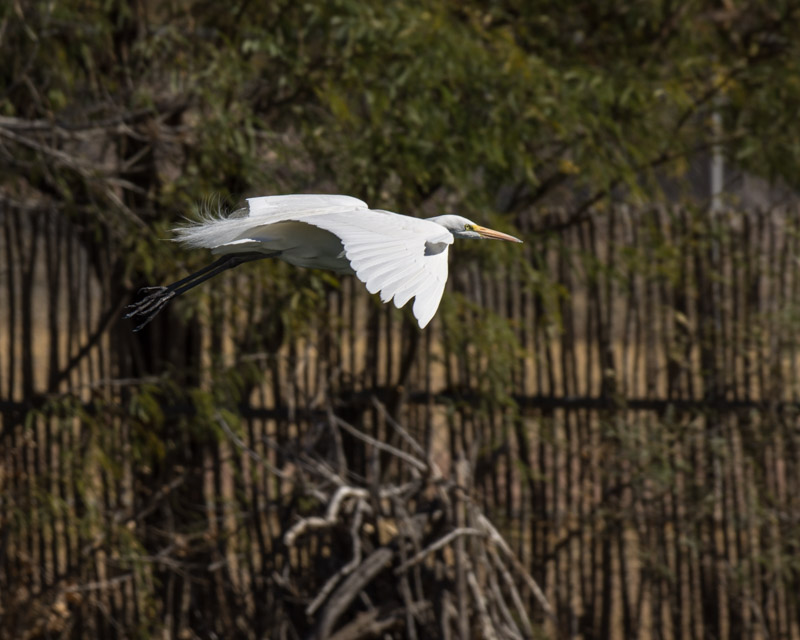
Great Egrets hunt in classic heron fashion, standing immobile or wading through wetlands to capture fish with a deadly jab of their huge yellow bill. It may wade while it searches for prey, or it may simply stand still while waiting for prey to approach.
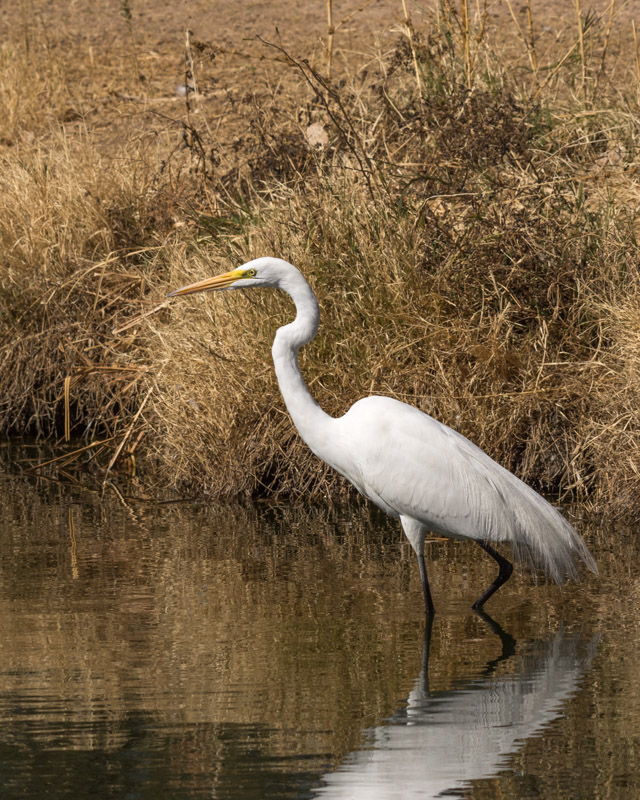
With startling speed, great egrets will strike with a jab of their long neck.
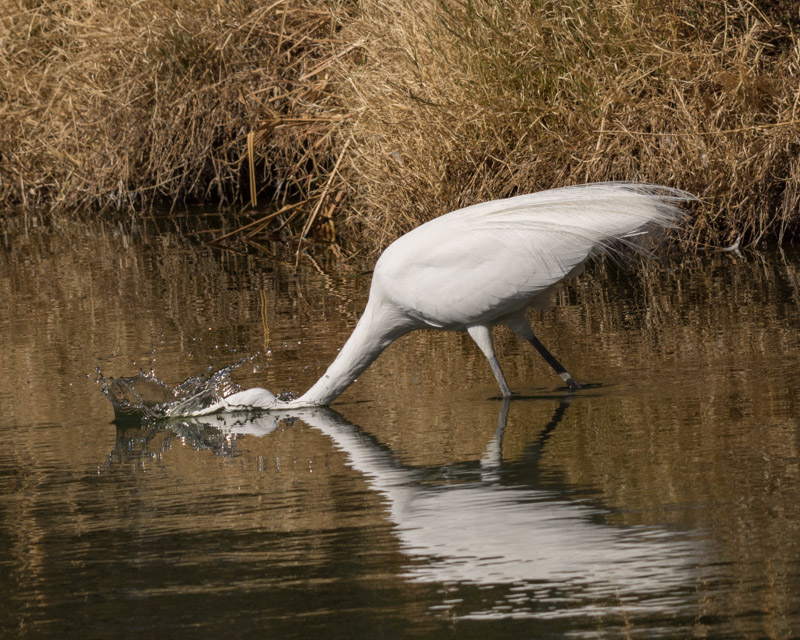
and then surface…
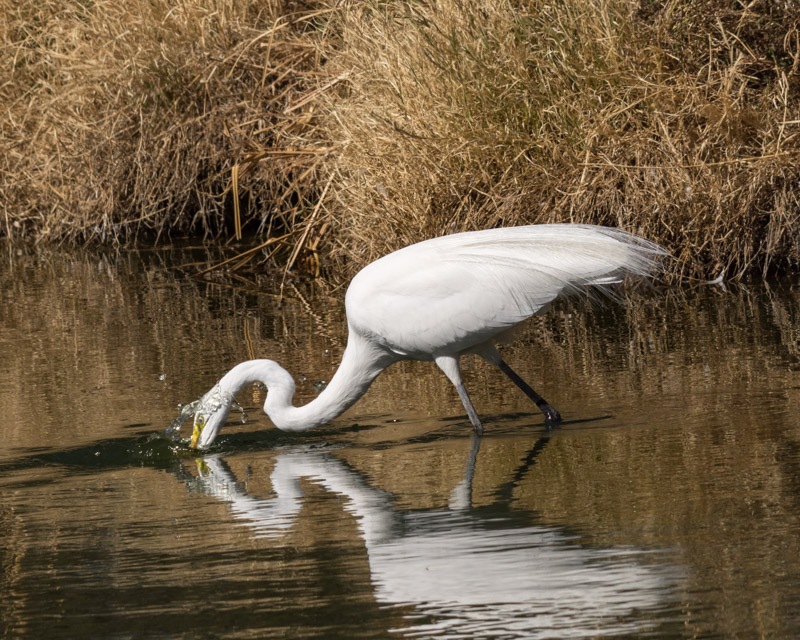
…with something to eat. While Great Egrets eat mainly fish, they will eat a variety of food present in their environment such as amphibians, crayfish, small reptiles or birds, dragonflies, etc.
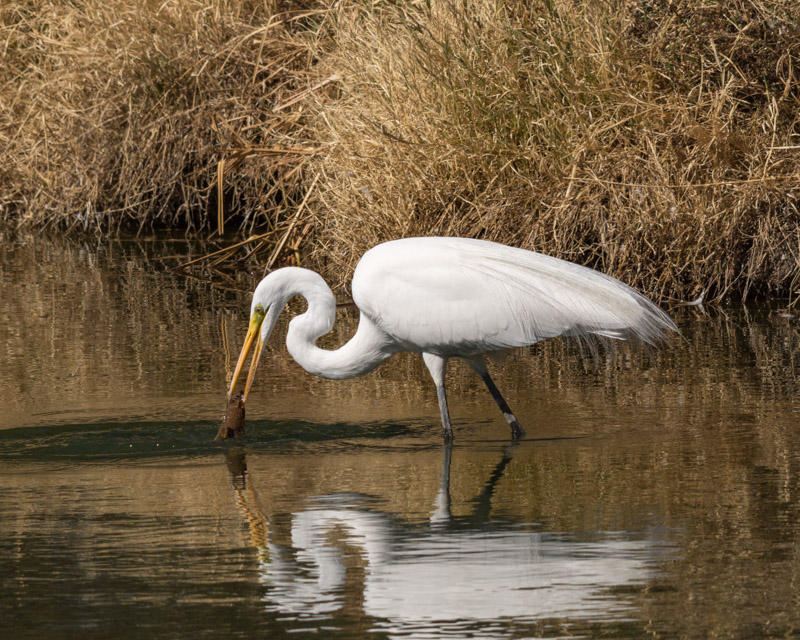
Sometimes they will hunt looking straight forward. Other times, they will tilt their head for a better look into the water and hold that pose until the prey is close enough.
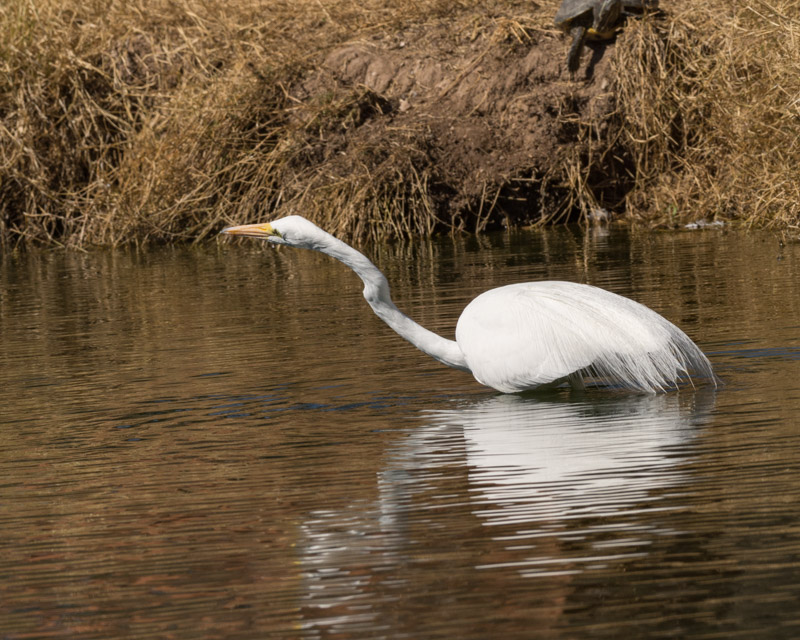
A smaller treat this time.
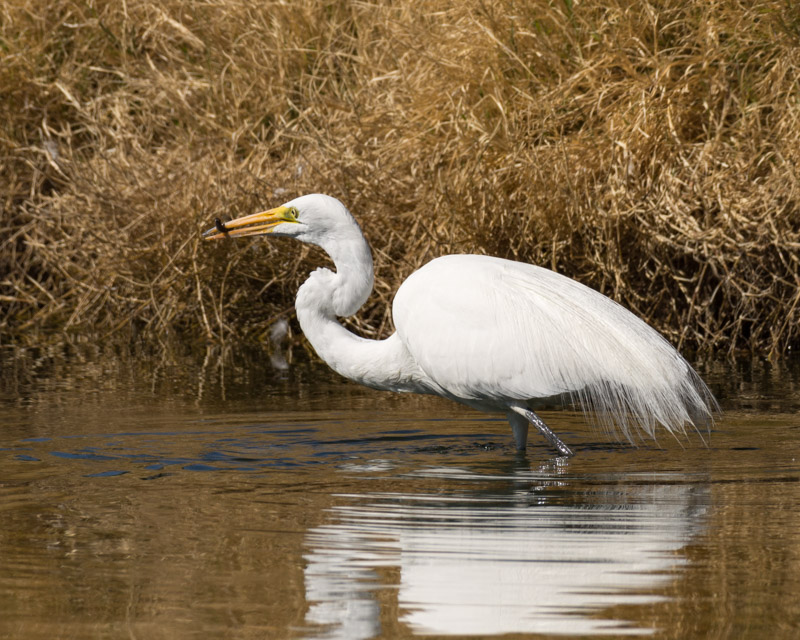
Down the hatch.
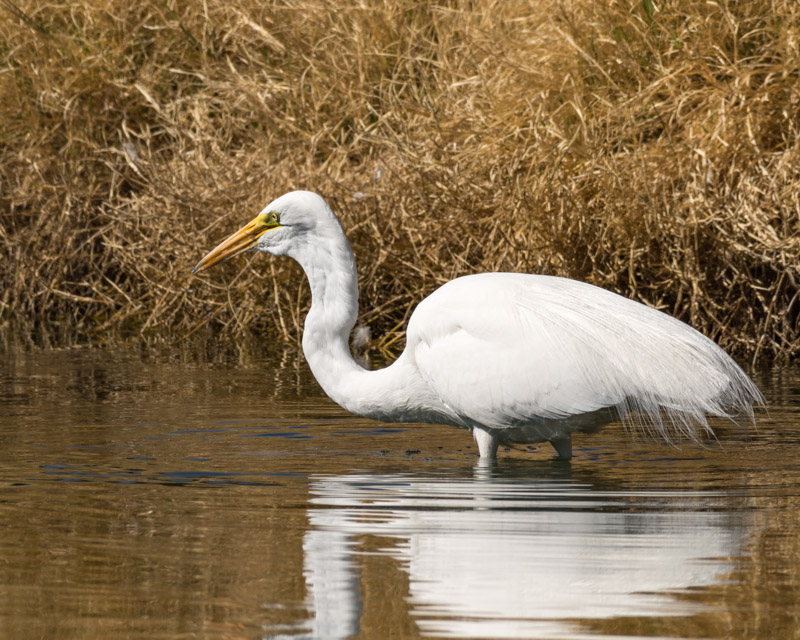
During breeding season Great Egrets grow long plumes on their backs which are raised for display during courtship displays.
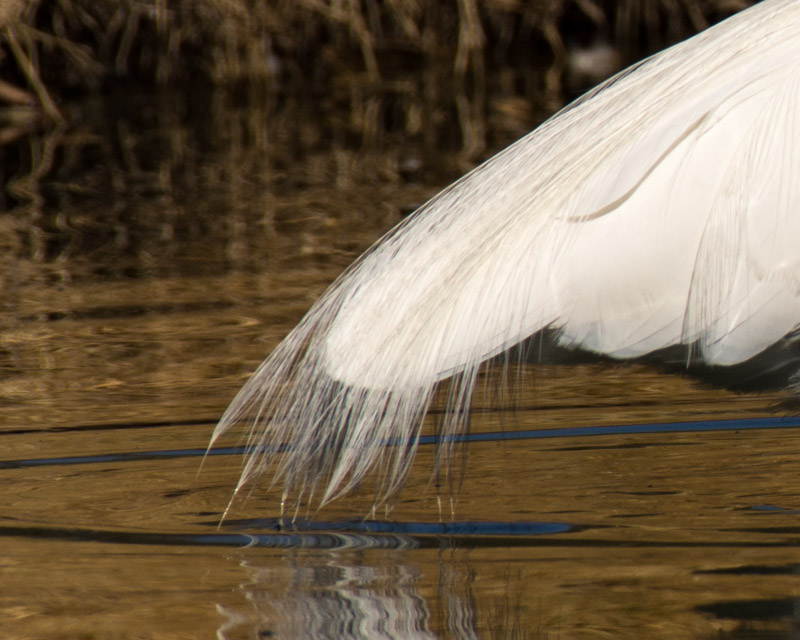
Another hunt.
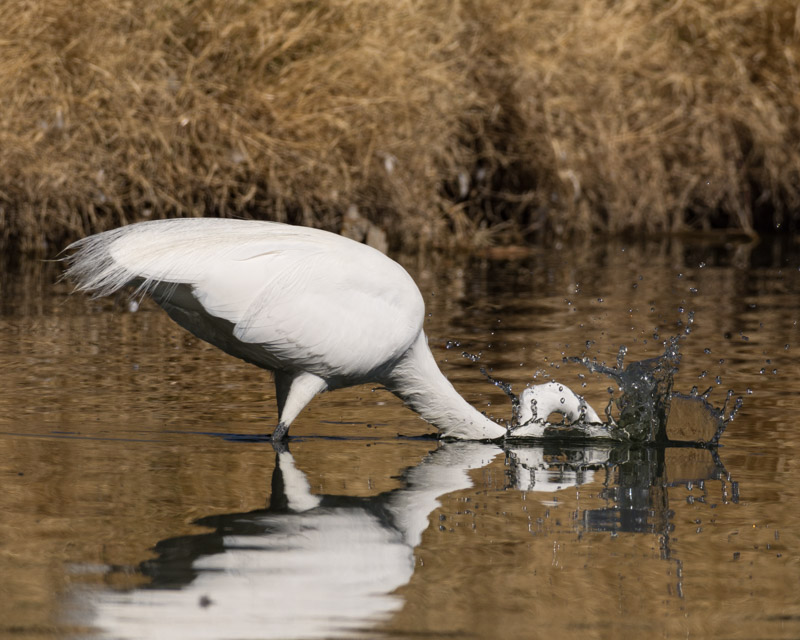
And another fish becomes a snack.
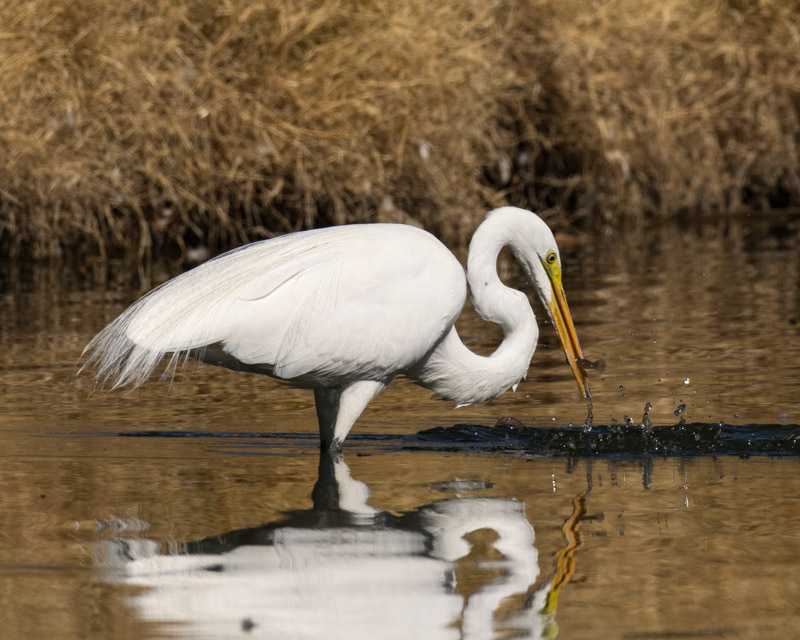
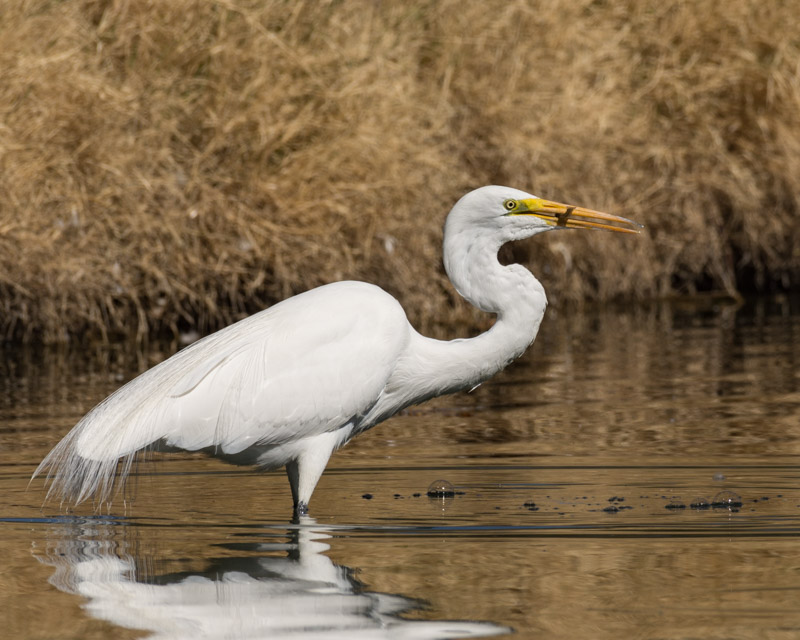
During breeding season, the Great Egret’s face will turn green from its bill to its eye. You can see a bit of that beginning below.
